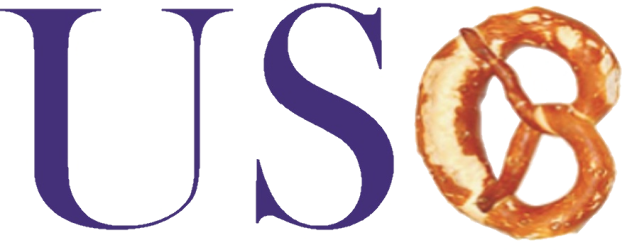Most likely clearly they could simply produce additional money to pay for their losings? With what follows it can help to own an awareness of exactly exactly just how banking institutions make loans and also the differences when considering the sort of cash produced by the main bank, and cash developed by commercial (or ‘high-street’) banking institutions.
Insolvency can be explained as the shortcoming to cover people debts. This frequently takes place for starters of two reasons. Firstly, for a few good reason the lender may wind up owing significantly more than it has or perhaps is owed. This means its assets are worth less than its liabilities in accounting terminology.
Next, a bank could become insolvent as they fall due, even though its assets may be worth more than its liabilities if it cannot pay its debts. It is referred to as income insolvency, or even a ‘lack of liquidity’.
Normal insolvency
The after instance shows how a bank could become insolvent due clients defaulting on the loans.
Step one: Initially the financial institution is in a economically healthier place as shown by the simplified balance sheet below. In this balance sheet, the assets are bigger than its liabilities, meaning there clearly was a more substantial buffer of ‘shareholder equity’ (shown regarding the right).
Shareholder equity is definitely the space between total assets and total liabilities being owed to non-shareholders. It could be determined by asking, “If we offered all of the assets associated with the bank, and utilized the profits to repay all of the liabilities, exactly exactly what is left over for the shareholders? ”. To phrase it differently:
Assets – Liabilities = Shareholder Equity.
Within the situation shown above, the shareholder equity is good, as well as the bank is solvent (its assets are higher than its liabilities).
Step two: a few of the clients the financial institution has awarded loans to default to their loans. Initially it is not issue – the financial institution can take in loan defaults as much as the worthiness of their shareholder equity without depositors putting up with any losings (even though investors will totally lose the worthiness of these equity). Nevertheless, guess that more regarding the banks’ borrowers either inform the lender they are no more in a position to repay their loans, or merely neglect to spend on time for several months. The financial institution may now determine why these loans are ‘under-performing’ or completely worthless and would then ‘write down’ the loans, by providing them a brand new value, that may also be zero (if the financial institution doesn’t expect you’ll get anything straight back through the borrowers).
Step three: they can be removed from the balance sheet, as shown in the updated balance sheet below if it becomes certain that the bad loans won’t be repaid.
Now, because of the bad loans having cleaned out of the investors equity, the assets regarding the bank are now actually well well worth not as much as its liabilities. Which means regardless if the lender sold all checkintocash its assets, it can remain not able to repay all its depositors. The financial institution has become insolvent. To look at various situations that could take place click that is next, or read on to realize what sort of bank can become insolvent due to a bank run.
Income insolvency / becoming ‘illiquid’
The example that is following what sort of bank can be insolvent as a result of a bank run.
Step one: Initially the lender is in a position that is financially healthy shown by its stability sheet – its assets can be worth a lot more than its liabilities. Regardless if some clients do default on their loans, there is certainly a buffer that is large of equity to safeguard depositors from any losings.
Step two: for reasons uknown (maybe because of a panic due to some news) people begin to withdraw their funds through the bank. Clients can request money withdrawals, or can ask the banking institutions to produce a transfer with the person to many other banking institutions. Banking institutions hold a tiny level of real money, in accordance with their total build up, and this can easily come to an end. Additionally they hold a quantity of reserves during the main bank, that can easily be electronically compensated across to many other banking institutions to ‘settle’ a customer’s electronic transfer.
The consequence of the money or transfers that are electronic through the bank will be simultaneously reduce steadily the bank’s fluid assets and its particular liabilities (by means of consumer deposits). These withdrawals can carry on before the bank runs out of money and main bank reserves.
The bank may have some bonds, shares etc, which it will be able to sell quickly to raise additional cash and central bank reserves, in order to continue repaying customers at this point. However, when these assets that are‘liquid have now been depleted, the lender will not manage to meet with the need for withdrawals. It may no more make cash or electronic repayments on behalf of its clients:
The bank is still technically solvent; however, it will be unable to facilitate any further withdrawals as it has literally run out of cash (and cash’s electronic equivalent, central bank reserves) at this point. The only way left for it to raise funds will be to sell off its illiquid assets, i.e. Its loan book if the bank is unable to borrow additional cash or reserves from other banks or the Bank of England.
Herein lies the issue. The financial institution requires money or bank that is central quickly (for example. Today). But any bank or investor considering buying it is illiquid assets will probably need to know concerning the quality of the assets (will the loans actually be paid back? ). It will take time weeks that are even months – to undergo millions or huge amounts of pounds-worth of loans to evaluate their quality. In the event that bank actually needs to offer in a rush, the only method to persuade the present buyer to purchase an accumulation assets that the customer hasn’t had the oppertunity to asses is always to provide an important discount. The bank that is illiquid probably be required to accept a fraction of its value.
As an example, a bank might appreciate its loan guide at Ј1 billion. Nevertheless, it may just get Ј800 million if it is obligated to offer quickly. Then this will make the bank insolvent if share holder equity is less than Ј200 million:

